One thing I love about photography, and probably life in general actually, is that you never stop learning. As previously posted on this blog, I changed cameras recently from a full frame dSLR, my Nikon D700, to a micro 4/3’rds mirrorless Olympus OMD EM5 MkII. Why is this important? Well, I shot almost all of my landscape shots on my D700 using my prime (no zoom) 50mm lens. When I needed a wider angle, I took multiple shots, typically with a Nodal Ninja Pano Head, and stitched them together into a single photo in Photoshop. Where I needed a narrower shot, well I just had to try and get closer and if I couldn’t, I’d suck it up and have to crop the photo I wanted out of the single frame. This was a habit I got into with this camera and whilst I was generally successful I’ve learnt this habit shouldn’t necessarily be applied to the new camera.
Since moving to my OMD, I no longer have a prime 50mm lens, in fact my two lenses are a 12-40mm and a 75-300mm. The 12-40mm is a “Pro” (good/expensive) lens which I tend to keep on the camera for those shots that pop up, whereas the 75-300mm is a relatively inexpensive lens which I bought to take wildlife shots etc. So, unintentionally trying to maintain my D700 50mm habit, whenever I was taking landscape shots with my OMD, I invariably used the 12-40mm lens at about 25mm. Being a cropped sensor at 2x magnification, this equated to a standard 50mm shot on a full frame camera like my old D700.
For the readers of this blog you’ll know that Jules and I have just spent a few days in the Flinders Ranges, South Australia where we found magnificent views almost wherever we looked. Some of the vistas were so far away that when I tried to shoot them at 25mm (50mm equivalent), the exciting bits of the photo were too small and insignificant in the frame. So, something I’ve always known about in photography but have never consciously applied is using a zoom lens to compress a long distance photo.
Well folks, I’d like to say I’ve now broken this hoodoo, and whilst trying to take a shot of a tree in the near’ish foreground with the ranges in the background I found the 12-40mm wasn’t cutting it so I flipped to the 75-300mm and reshot it at 75mm (150mm equivalent). To my delight the telephoto lens compressed my shot and I feel makes the whole photo work, here it is.
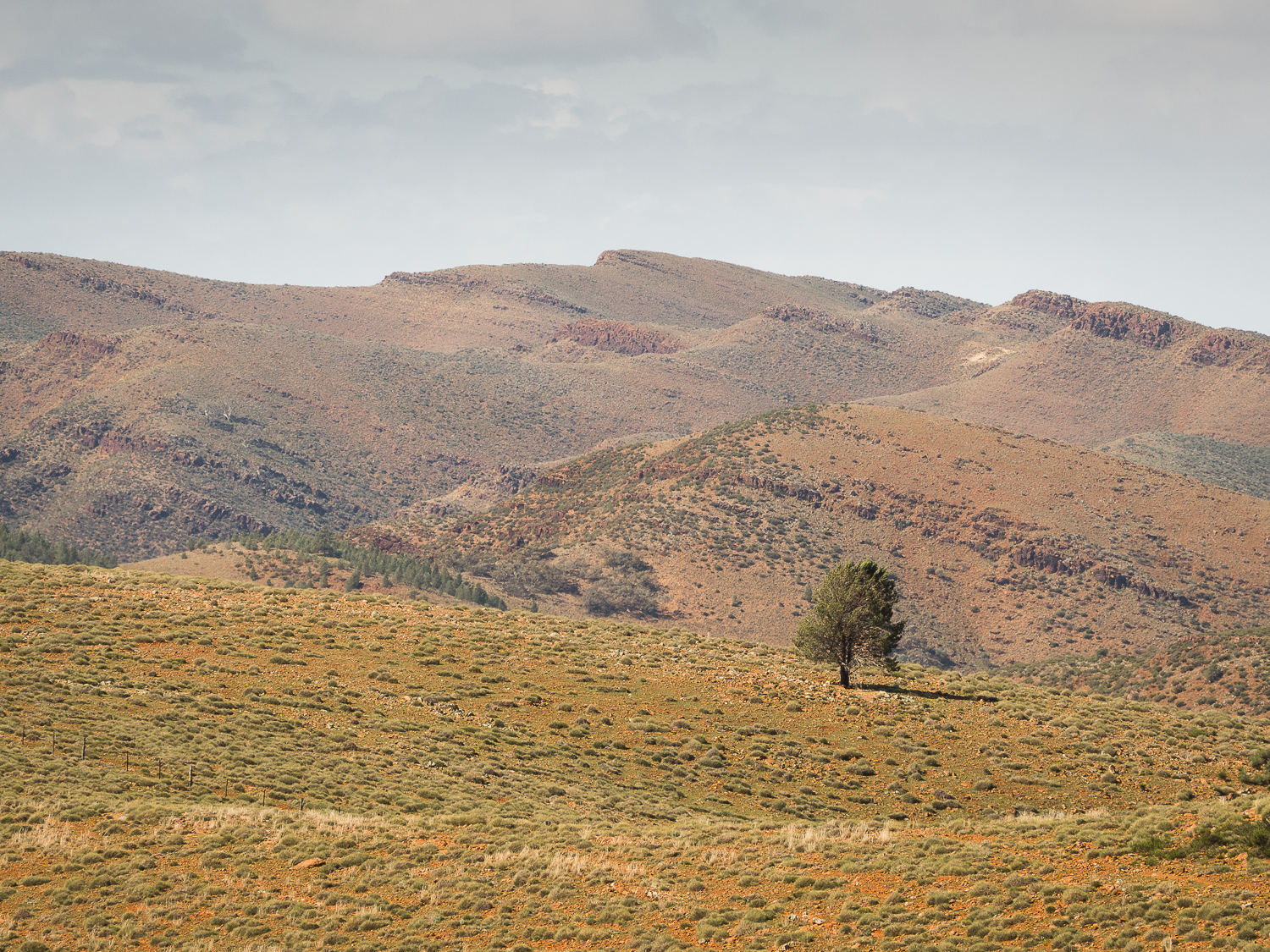
Having now learnt this skill, I went back to a previous photo location to retake it using the telephoto lens and you can see the results below. Both shots are untouched (straight out of the camera but resized smaller for the blog) and the first shot was at 36mm (72mm equivalent) using the 12-40mm whereas the second shot was taken at 109mm (218mm equivalent, i.e. zoomed) using the 75-300mm lens. I personally like the effect the zoom lens has by compressing the image. I’d be interested in your opinions.
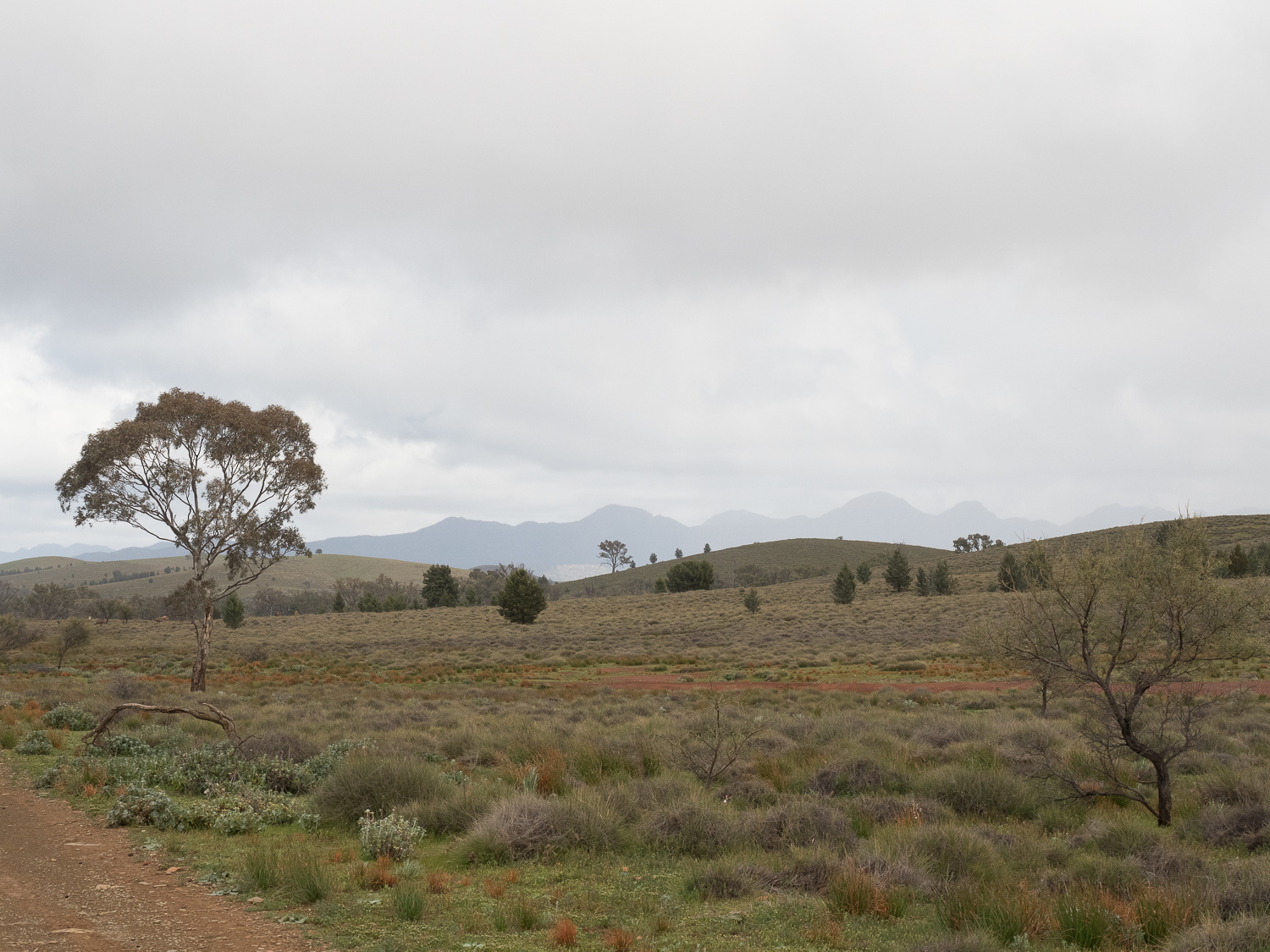
Taken on the 12-40mm lens at 36mm (72mm equivalent). I was trying to frame the shot with the symmetry of the gumtrees in the foreground and out on the distant hill and whilst I did, I’m not happy with how far away that distant tree looks.
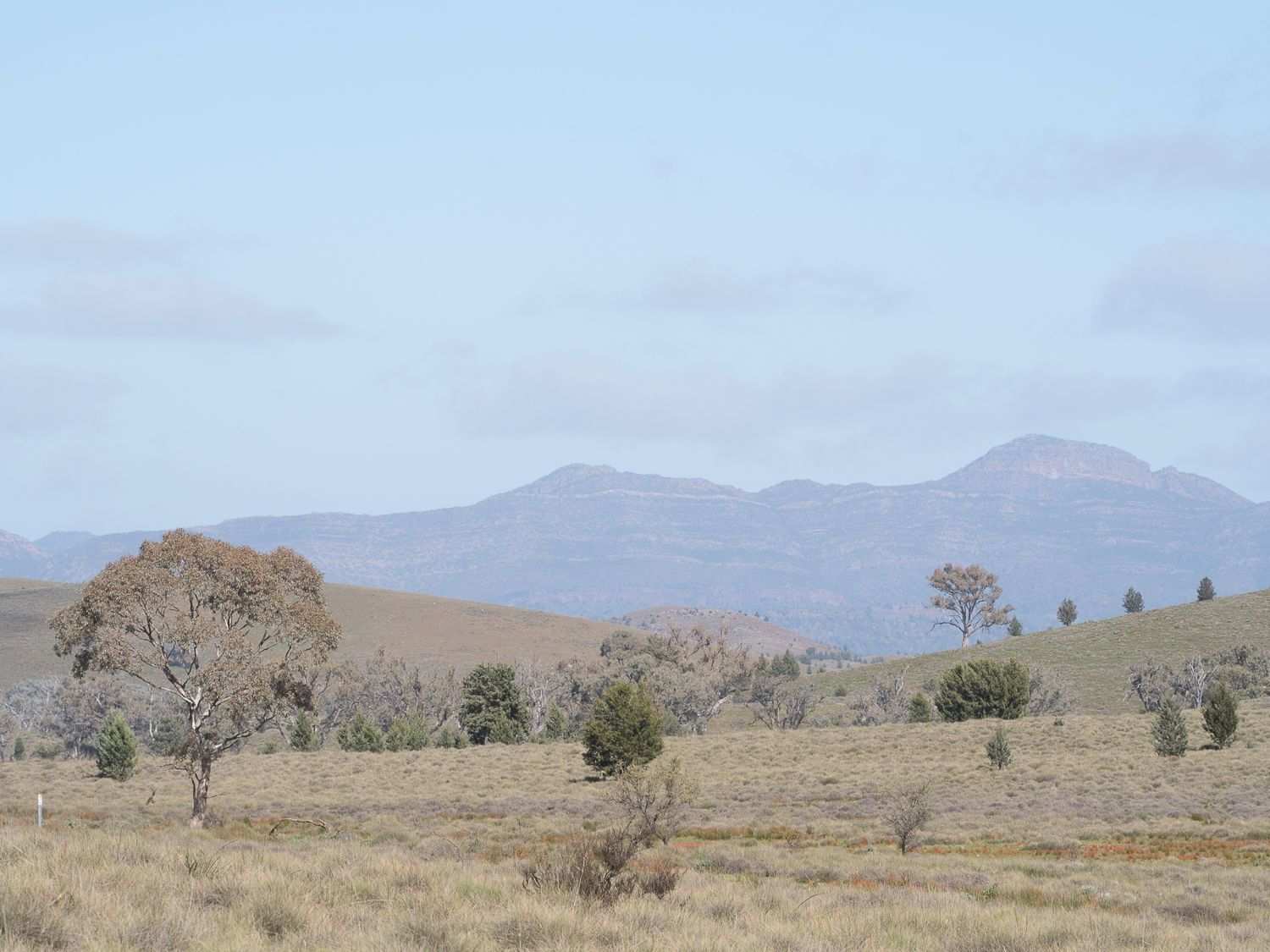
Same shot using the two gumtrees but this time taken at 109mm (218mm equivalent) on my 75-300mm lens. Notice how the distant gumtree on the hill and the range seem much closer and clearer? To fit both trees in at 109mm I had to stand a LONG way back from the first/front gumtree..
For final comparison, here’s the two shots again, 1st on 12-40mm and 2nd on 75-300mm lens, this time with some basic post processing applied.
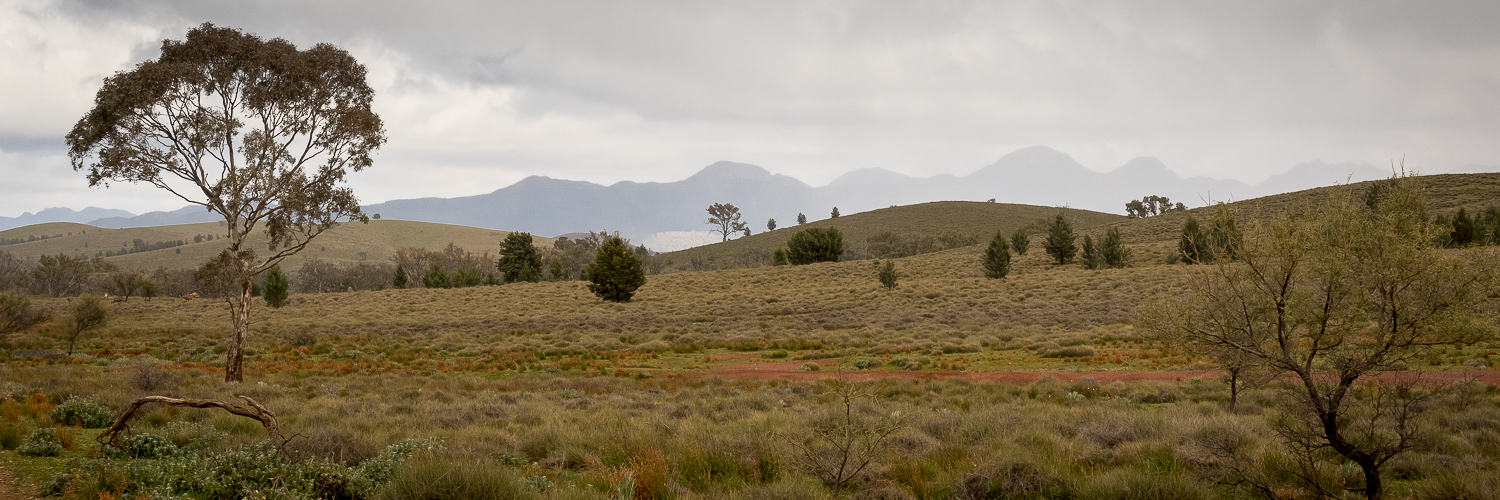
Post processed shot, taken at 36mm
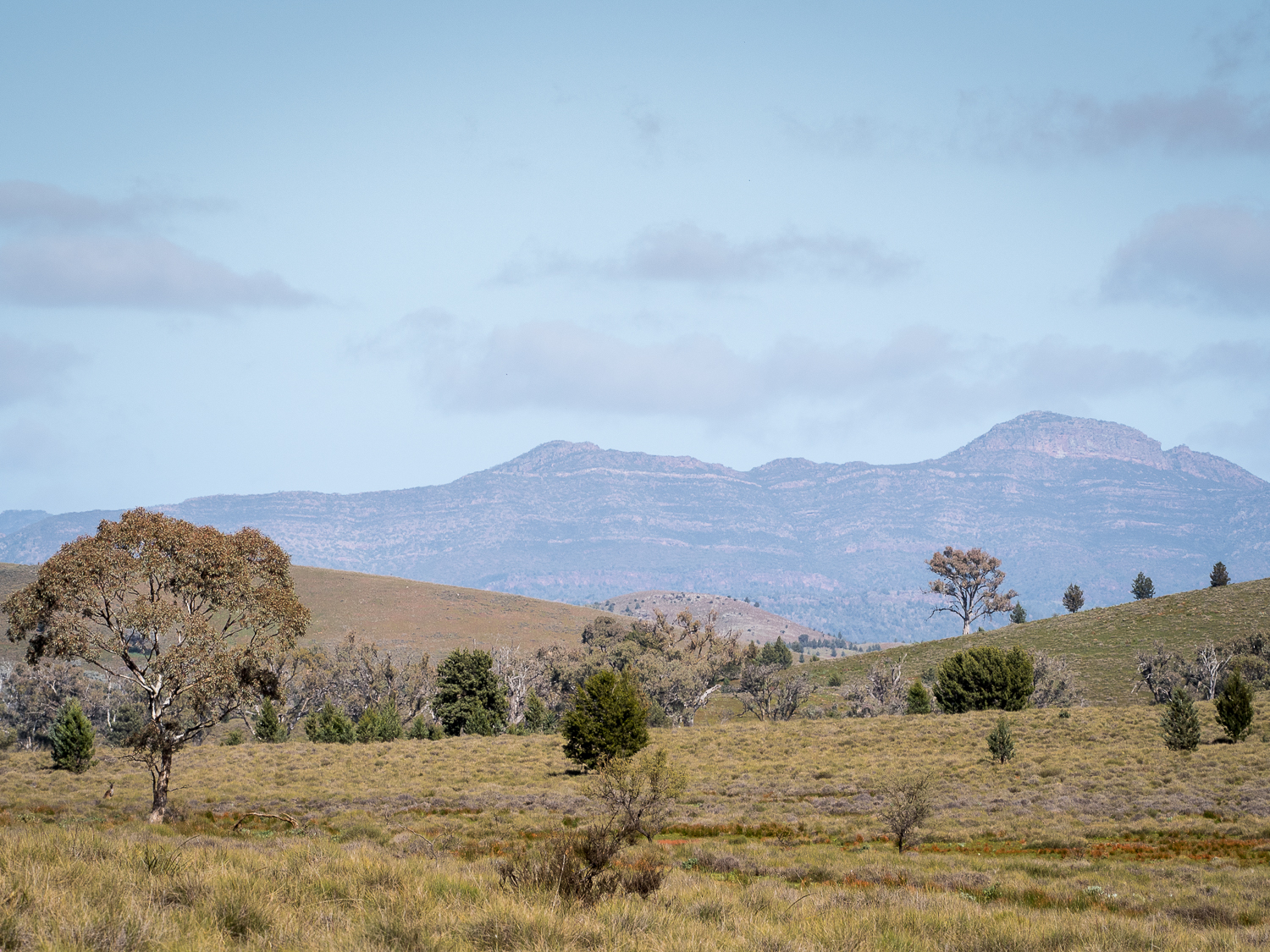
Post processed shot taken at 109mm